Mountain Biking
Mountain biking is a thrilling outdoor sport. Whether you ride Downhill, XC, All Mountain/Enduro, Dirt Jumps, Trials, or Urban/Street, you've experienced the excitement, challenges, pains, and victories that we know as mountain biking. There are many styles of bikes and many disciplines associated with them, each one with its own communities but every one filled with a passion that starts with getting on a bike. Trails range from smooth and flowy singletrack to rocky and technical descents, and they can be found in forests, deserts, mountains, and even urban areas.
Are you ready for an adrenaline-fueled adventure that will take you through rugged terrain and breathtaking landscapes? Look no further than mountain biking!
Mountain biking is a thrilling outdoor sport that involves riding a specialized bicycle off-road, typically on rough, unpaved trails.
One of the main draws of mountain biking is the sense of freedom and exploration it offers. With a mountain bike, you can go places that are inaccessible by foot or car, and you get to experience the natural world in a unique and exhilarating way. Whether you're tackling a challenging climb, flying through a flowing descent, or just cruising through the woods, there's a sense of adventure and accomplishment that comes with every ride.
But mountain biking isn't just about the thrill of the ride. It's also a great way to get outdoors, exercise, and socialize with like-minded people. Many mountain biking communities have formed around the sport, and it's not uncommon to see riders of all ages and abilities coming together to share their passion for the trails.
Mountain biking is fast gaining popularity with people of all ages, genders, backgrounds, and athletic abilities. Young children are finding new adventure on small trails and local pump tracks. For many young adults, it's a hobby that allows them to get outside and cover some ground, while getting some good exercise, and feeling the adrenaline pumping in the process. There's no age cap either. Senior citizens alike are taking to the trails, often outdoing their younger competitors as they enjoy a pastime that provides recreation and keeps them young.
So, how do you get started with mountain biking? First, you'll need a mountain bike and helmet. Mountain bikes are built specifically for off-road riding, with features like suspension, sturdy frames, and wide tires that provide traction and stability on rough terrain. You can find mountain bikes at sporting goods stores, bike shops, and online retailers, and they come in a wide range of prices to suit different budgets and needs.
Once you have a bike, the next step is to find some trails. Many parks, forests, and other public lands have designated mountain biking trails. If you're new to mountain biking, it's a good idea to start with easier trails and work your way up to more challenging ones as you gain skills and confidence.
As you get more involved in mountain biking, you may also want to consider joining a local mountain biking club or organization. These groups often have regular rides, events, and trail maintenance days, and they can be a great way to meet other riders, learn new skills, and give back to the trails.
Cities and counties are jumping on the bandwagon turning dormant property into mountain bike parks and trail systems that provide recreation for those in their community and even bring in tourism. All of that for the cost of clearing some brush and moving some dirt.
So, whether you're a seasoned pro or a total beginner, there's a mountain biking adventure waiting for you. All you need is a bike, some trails, and a sense of adventure. Get out there and start exploring!
Mountain Biking Etiquette
Never modify trail features. Trails were built how they are for a reason. Difficult spots for you may be features for somebody else. People enjoy riding chunky trail, huge drops, small berms, and often even logs on the trail. If you think you have an exception to this rule, find out who manages the trail and get permission before you "fix" somebody's favorite feature.
Always ride at your appropriate level. Riding a trail you're not ready for is dangerous to you, others, and even the trail. Check trail maps and signs to know what to expect and make sure it's something you can safely do.
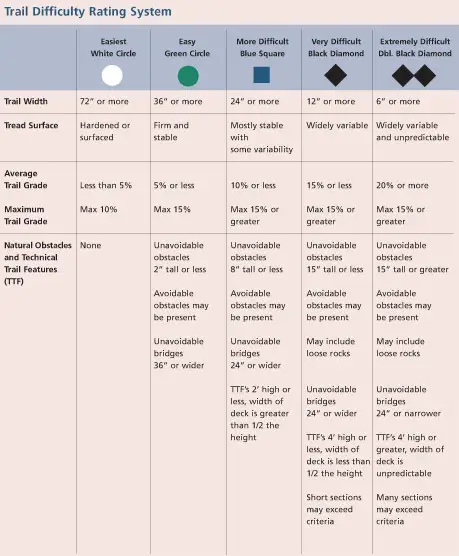
Courtesy of IMBA
Ride trails when they're dry. Riding trails muddy often leads to deep ruts cut into the trail where they shouldn't be.
Stay on the trail. Leaving the trail creates new trails where there shouldn't be trails. Going around a mud hole just creates bigger and bigger mud holes for future riders. Ride what's there and don't be afraid to walk if you can't ride it out.
Don't block the trail. Taking a break or just getting out of the way is the exception to the rule. It's okay to get you and your bike off the trail for a minute to clear the trail for others.
Speak up. When you see others on the trail, let them know you're there. Be friendly and greet people and expect that somebody may be around any blind corner. Mountain bikes move fast and if you're not expecting it, can be quite scary. What would you think if you were on a peaceful hike in the woods and all of the sudden some big dark object comes barreling out of nowhere?
Share the Trail. Mountain bikers yield to hikers, horses, and uphill traffic of any kind. Yielding means you that you slow down or stop to allow others to pass easily. Slow down, communicate, and be prepared to stop if needed. This may kill your flow, your Strava time, or your land speed record but having a good relationship with others on the trail means more access to more trails.
When passing
Hikers:
- Greet hikers early
- Slow down to about the same speed as the hiker
- Pass slowly and be prepared to stop if necessary
- Expect the unexpected. Humans and animals can be unpredictable or easily spooked by cyclists.
Cyclists:
- Announce your intention to pass with a friendly "Let me know when it's safe to pass."
- Use the singletrack yield on narrow trail — stop to the side, put one foot down, and lean away from the trail.
Horses:
- Stop at least 30 feet from the horse.
- Greet the equestrian and the horse to demonstrate that you are a human, and not a predator.
- Ask for instruction on how to pass safely. Offer to get off your bike.
- Pass slowly and steadily, but only after the equestrian gives you the go-ahead. Sudden movements can spook a horse.
Courtesy of ridgetorivers.org
Here's some of our favorite mountain bike trails
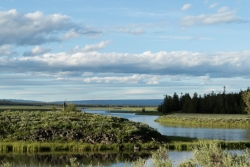
Harriman State Park
Island Park, Idaho
8.3 miles SW of Island Park, IdahoHarriman State Park is found 38 miles from Yellowstone along Henry's Fork. This 11,000-acre wildlife refuge is open year round for most activities. In addition to having beautiful scenery and...
Cross-country Ski, Hike, Horseback, Mountain Bike, Snowshoe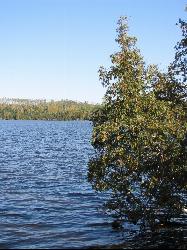
White Pine Lake
Sandy, Utah
8.5 miles E of Sandy, UtahWhite Pine Canyon has long been the subject of intense controversy between advocates of wilderness and ski resort owners. The original boundaries of Lone Peak Wilderness Area, created in 1977, were...
Hike, Mountain Bike 13.2-13.5 mi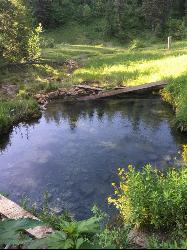
Bear Creek Hot Springs
Irwin, Idaho
9.8 miles S of Irwin, IdahoBear Creek Hot Springs is a 15 mile out and back trail with a hot spring at the end. The trail is not well marked and is only recommended for very experienced outdoorsmen and primarily used for...
Backpack, Camp, Hike, Horseback, Hot Springs, Mountain Bike 0.1-0.5 mi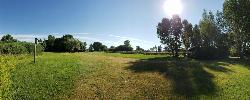
Eagle Park
Rexburg, Idaho
0.9 miles N of Rexburg, IdahoEagle Park is a little urban oasis. Once you drive in to this cottonwood forest along the river, you may forget that you're still inside Rexburg city limits. You can camp, picnic, throw rocks in...
Camp, Hike, Mountain Bike, Sled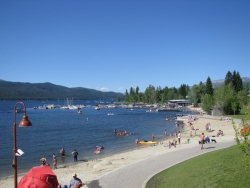
Mccall Area
McCall, Idaho
10.4 miles NE of McCall, IdahoMcCall is a beautiful resort town located in western Idaho, two hours north of Boise. It's feautures a multitude of activity of activities in both the Winter and Summer months, including:...
Backpack, Camp, Canoe, Cross-country Ski, Hike, Kayak, Mountain Bike, Sled, Snowshoe, Swim 0.2-9.7 mi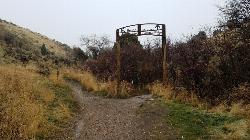
City Creek
Pocatello, Idaho
1.3 miles S of Pocatello, IdahoThe City Creek Management Area (CCMA) Trail System is a vast network of trails maintained by the City of Pocatello. There are trails to go up and others to come down. Most trails come back to the...
Hike, Horseback, Mountain Bike 1.7 mi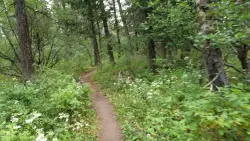
Buckskin Morgan Ridge
Ririe, Idaho
9.0 miles E of Ririe, IdahoCLOSED. This land is owned and managed by the US Forest Service and is not designated for use. As of July 2024, being caught mountain biking on this trail could recieve up to a $5000 fine and a...
Hike, Mountain Bike 0.2-0.4 mi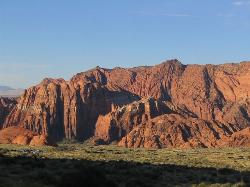
Snow Canyon State Park
St. George, Utah
8.4 miles NW of St. George, UtahSnow Canyon State park is often described as a smaller version of Zion National park. While both offer similar beautiful landscapes, exciting trails for adventure seeking hikers, and family friendly...
Cave, Hike, Mountain Bike, Rock Climb 2.7 mi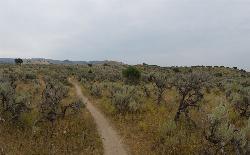
Sidewinder Trail
Ririe, Idaho
6.5 miles E of Ririe, IdahoSidewinder's claim to fame is that it's on a South facing hill just above the Snake River. That means that when all the other trails in the Kelly Canyon Trail network are covered with snow...
Mountain Bike 0.6-5.5 mi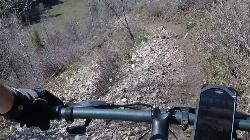
Old Ranger
Ririe, Idaho
15.2 miles E of Ririe, IdahoOn the South end of the Big Hole mountains just above the Snake River is a grueling yet diverse section of single-track on Forest Service Trail 287 called Old Ranger. Because of the...
Mountain Bike- Plan Ahead and Prepare. Know the regulations and special concerns for the area you'll visit. Prepare for extreme weather, hazards, and emergencies. Schedule your trip to avoid times of high use. Visit in small groups when possible. Consider splitting larger groups into smaller groups. Repackage food to minimize waste. Use a map and compass to eliminate the use of marking paint, rock cairns or flagging.
- Travel & camp on durable surfaces. Durable surfaces include established trails and campsites, rock, gravel, dry grasses or snow. Protect riparian areas by camping at least 200 feet from lakes and streams. Good campsites are found, not made. Altering a site is not necessary.
- Dispose of waste properly. Pack it in, pack it out. Inspect your campsite and rest areas for trash or spilled foods. Pack out all trash, leftover food and litter. Deposit solid human waste in catholes dug 6 to 8 inches deep, at least 200 feet from water, camp and trails. Cover and disguise the cathole when finished. Pack out toilet paper and hygiene products. To wash yourself or your dishes, carry water 200 feet away from streams or lakes and use small amounts of biodegradable soap. Scatter strained dishwater.
- Leave what you find. Preserve the past: examine, but do not touch cultural or historic structures and artifacts. Leave rocks, plants and other natural objects as you find them. Avoid introducing or transporting non-native species. Do not build structures, furniture, or dig trenches.
- Minimize campfire impacts. Campfires can cause lasting impacts to the environment. Use a lightweight stove for cooking and enjoy a candle lantern for light. Where fires are permitted, use established fire rings, fire pans, or mound fires. Keep fires small. Only use sticks from the ground that can be broken by hand. Burn all wood and coals to ash, put out campfires completely, then scatter cool ashes.
- Respect wildlife. Observe wildlife from a distance. Do not follow or approach them. Never feed animals. Feeding wildlife damages their health, alters natural behaviors, and exposes them to predators and other dangers. Protect wildlife and your food by storing rations and trash securely. Control pets at all times, or leave them at home. Avoid wildlife during sensitive times: mating, nesting, raising young, or winter.
- Be considerate of other visitors. Respect other visitors and protect the quality of their experience. Be courteous. Yield to other users on the trail. Step to the downhill side of the trail when encountering pack stock. Take breaks and camp away from trails and other visitors. Let nature's sounds prevail. Avoid loud voices and noises.

















